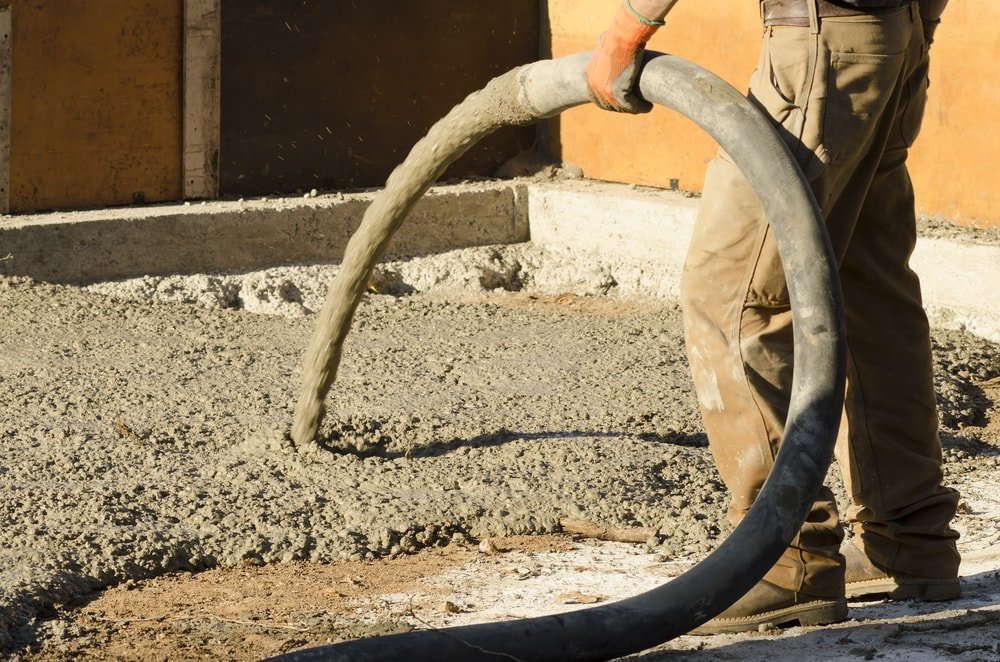How to properly position your concrete pump
Tips For Positioning The Boom And Stabilizing The Truck
The safe positioning of the truck is one of the major concerns when it comes to pumped concrete pour operation. Safety should always come first in such situations.
An incorrectly positioned pump can cause severe or lethal injuries, turning a common pumping job into a nightmare. The pumping team should only use the equipment after they’ve made sure all safety conditions are met and the pump truck and the boom are perfectly stabilized.
Positioning The Boom
As operators can’t rely on their eyes for precision positioning of far away objects, they should use specific technology for this operation.
- They should use a remote control to measure again the distance between the boom and the wires. The best measurement is done perpendicular to the boom, between the power wires and the placing area.
- A spotter using either a walkie-talkie or hand signals must be used to provide assistance to the operator of the boom, should this worker be unable to leave the pump.
- If the work needs to unfold after dark, the operator should position and extend the boom during daylight. After dark, a spotlight or a powerful flashlight should be used to check the distance between the boom and the power lines.
Things to check before unfolding a pump truck boom on a new site:
- Power Lines
Many elements of a truck boom are very good conductors of electricity. Moreover, the high water content in concrete makes it a great electricity conductor, should the pump come in contact with power wires. This is why electrocution is the primary cause of work related death among concrete pump operators. This is also why all concrete workers should wear rubber boots that provide protection against the high voltage carried by common residential power lines. Proper equipment is mandatory on such job sites, as it helps preventing accidents.
Half of all accidents occur when the boom is unfolded, folded or removed from site. This is why OSHA recommends to have a full time spotter to supervise these operations and warn the team about any possibility of hitting a power wire.
- Excavations
Pumping concrete near an excavation requires that for every foot of depth, the pump should be placed at least one foot away from the edge. In case of a slope, the pump may not need to have such a big setback. However, in case of a vertical drop-off, you have to observe this minimum distance.
When you need to pump concrete into an excavation, you need to be aware that most boom pumps have a much smaller downward reach. It is possible for a pump that’s able to reach up to 100 feet in height to have only 50 feet or even less this reach downward.
- Other Obstacles And Limitations
Your job site may also be obstructed by other buildings, scaffolding or cranes, to give you only a few examples of things you need to pay attention to. You should make sure you pick the proper boom length for your project. A too short one may encounter problems with various obstructions, even though it could pour the concrete correctly. This is why it isn’t enough to choose a boom that can extend as much as you need for the concrete pouring job itself, but you need to take into consideration all obstacles that may interfere with the boom.
Concrete Pump Truck Stabilization
Many pump trucks use wood and aluminum pads, as well as layers of cribbing in order to spread out the load. This mans you need to take into consideration both the bearing capacity of the soil and the one of the cribbing. As this is one of the most important steps in such projects, you should take your time and do all proper measurements and calculations required for a safe installation of your truck.
Stabilizing the concrete pump requires finding out whether the surface you’re going to mount your truck on is capable to provide adequate support. You can do this by calculating the pressure placed on the ground by each outrigger by dividing the maximum force on the leg by the area that makes contact with the ground. This area is either the area of the aluminum or wood pad, or the cribbing. If the pressure force is less than the load bearing capacity of the ground, you know that surface is safe for mounting your pump truck on.


